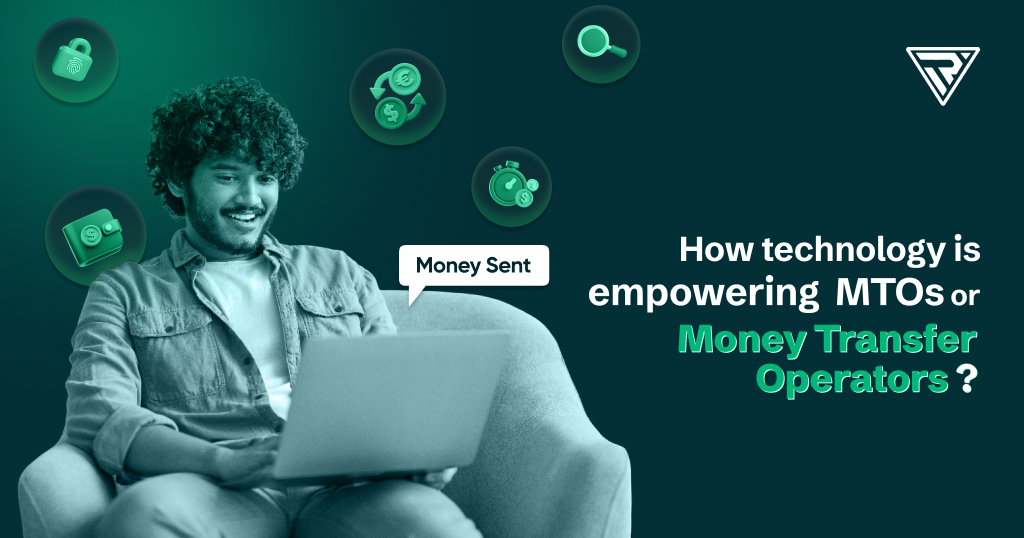How Technology Is Empowering Money Transfer Operators (MTOs) ?

Money Transfer Operators (MTOs) have been the engine for growth in global remittances and cross-border payments for over a decade. While traditional banking institutions remain restricted by rigid frameworks, MTOs are leveraging digital transformation to reshape how money moves across borders.
By investing in advanced remittance platforms and emerging technologies, MTOs have not only scaled their own operations but have also improved the global remittance ecosystem. Let’s explore how technology is empowering Money Transfer Operators (MTOs) in detail.
Quick, Digital, And Compliant Onboarding
Client onboarding is an important step for any remittance business, as it is usually the first point of contact between Money Transfer Operators (MTOs) and their clients.
Efficient client onboarding includes verifying the identity of platform users. It is required not only to comply with Know Your Customer (KYC) and Anti-Money Laundering (AML) protocols but also to keep the platform secure. However, it takes a long time, and the likelihood of human error remains high.
However, technological advancements are changing that! Modern remittance software automates regular operations for the MTOs, including client onboarding.
Platforms are equipped with digital identity verification tools, such as document verification, biometric matching, and legitimacy checks. MTOs do not have to deal with excessive paperwork or rely on manual processes. These tools automate the entire user verification process and complete onboarding in seconds.
Speed and Efficiency in International Money Transfers
This is the most evident yet the most beneficial aspect of technological advancements in cross-border payments, and that is the increasing speed of international payment and settlement rails.
Earlier, it took weeks to process international payments and required multiple intermediaries to complete the transaction.
MTOs use money remittance software to simplify payment systems and process payments more quickly. These platforms use real-time payment networks, API-driven banking integrations, and even blockchain transactions to make much faster payments. Thus, payments can be made to any part of the world in a matter of seconds or even minutes.
Mobile Remittance and Digital Wallets
In the past, remitters had to visit banks and local remittance agent offices to initiate the money transfer request. Similarly, receivers had to go to the physical branches to collect their money. This was time-consuming and inconvenient, especially due to the limited banking hours.
However, just as technology has helped bring every service to cell phones, so has remittance. Nowadays, money transfer operators (MTOs) use modern remittance platforms that are accessible via desktop, laptop, tablet, and mobile devices. Remitters can send money overseas for both business and personal reasons without leaving their homes, while recipients can receive funds on their digital wallets.
In regions with limited banking infrastructure, mobile remittances and digital wallets have been especially helpful. These solutions allowed users to send and receive money directly through mobile wallets even in remote or underbanked areas.
Enhanced Transparency In Cross-Border Payments
Traditional cross-border payment systems often rely on multiple correspondent banks, which is the primary reason for complex and fragmented payment rails. Further, each mediator in the remittance network typically adds its own service fee, which results in opaque cost structures.
Hence, this multi-layered structure makes it difficult for remitters to understand how their money moves and what fees are being charged along the way.
Modern technology has worked so well in simplifying the payment rails for both MTOs as well as remitters. Advanced remittance platforms now provide detailed cost breakdowns that show exactly where each fee is applied for each and every transaction.
Furthermore, these platforms include a transaction tracking feature that gives complete visibility to the payment rail. Remitters can monitor the status of their payments via platform dashboards, alerts, and notifications.
FX Automation
Foreign exchange is a crucial element in remittance transactions. It actually impacts conversion rates and the final payout to receivers. However, due to the market’s dynamic nature, FX rates for each currency pair change over time.
Money transfer software includes real-time FX engines that automate FX quotes. These systems display live exchange rates to remitters and even calculate margins, providing complete visibility. It ensures fair pricing and delivers greater trust in every transaction for MTOs.
Employing AI, Machine Learning, And Data-Driven Fraud Prevention
Remittance involves sharing both extra-sensitive personal and financial details. Hence, they are a common target for fraud and cyberattacks. Money Transfer Operators (MTOs) use highly secure platforms that are integrated with technologies like artificial intelligence (AI), machine learning (ML), and data analytics.
These models use device fingerprints, transaction patterns, historical outcomes, and more to monitor the platform and identify suspicious transactions. As a result, they help MTOs ensure the security and integrity of the international money transfers.
Wrapping Up
Emerging technologies have helped money transfer operators improve their remittance operations and services, ultimately improving the overall customer experience. Modern remittance software now offers features such as instant settlements, real-time tracking, transparent pricing, and secure transactions, among others.
Tech Remit provides comprehensive consulting and development services to Money transfer operators. We build white-label remittance platforms using modern technologies and tools designed to simplify the remittance process. Our money remittance software applications come equipped with essential integrations that enhance security, currency handling, compliance, processing, and banking connectivity. Request a demo today to learn more!